What: 2023 Porsche 911 GT3 RS
Where: Shell V-Power Motorsport Park, SA
Conditions: Warm, sunny and clear
What is it?
Porsche’s latest and greatest driver’s car and the next member of an impressive line of racing-inspired road cars. The GT3 RS is the pinnacle of driver’s cars in the 911 line-up, even if the Turbo S is more powerful, this is the one designed for the person behind the wheel.
Why does it deserve a track test?
Porsche’s history in motorsport, more than 60 years of racing in everything from Formula 1 to Carrera Cup has led to this latest creation. While all GT3 and GT3 RS models have a strong motorsport connection, this latest version pushes the boundaries like never before. The entire aerodynamic concept of the car is taken from racing and has resulted in wholesale changes to the car, both above and below, resulting in a car that’s not too far away from a Carrera Cup racer with number plates.
There are a huge amount of changes, even over and above the already very fast and capable GT3, but I’ll highlight some of the key elements.
One of the biggest changes is the centrally-mounted radiator, which sits where the front luggage compartment does in the rest of the 911 range, which makes it less practical but helps it stick to the ground better. This is the same set-up Porsche uses on the 911 RSR and the 911 GT3 R as it allows for active aerodynamic flaps, which can open and close when DRS is operating, to be integrated into the front end design where the radiators typically would sit.
This new front splitter can then channel air either over or underneath the car, working in unison with the rest of the aerodynamic package, which includes front wheel arch vents and inlets behind the front wheels; which are directly inspired from the outright Le Mans-winning 911 GT1.
Moving down the side of the car the new front guards mean new doors were required, with a noticeable aerodynamic crease integrated into them. In fact, aside from the rear three-quarter panels and glasshouse, most panels on the GT3 RS are different from even the GT3 and all in the name of aerodynamics.
Moving to the rear there’s a similar diffuser to the GT3 but it’s hard to miss the unique rear wing of the GT3 RS. To call it attention-grabbing is an understatement, with the top element of this multi-element, drag reduction system (DRS) equipped wing actually sitting higher than the roofline; a first for a production Porsche.
Even the suspension has been aerodynamically tuned, with teardrop-shaped profiles, like you’d find on an open-wheeler, to further help improve downforce.
Porsche claims the aerodynamic package adds 409kg of downforce at 200km/h, which is three times more than the standard GT3.
What’s it like inside?
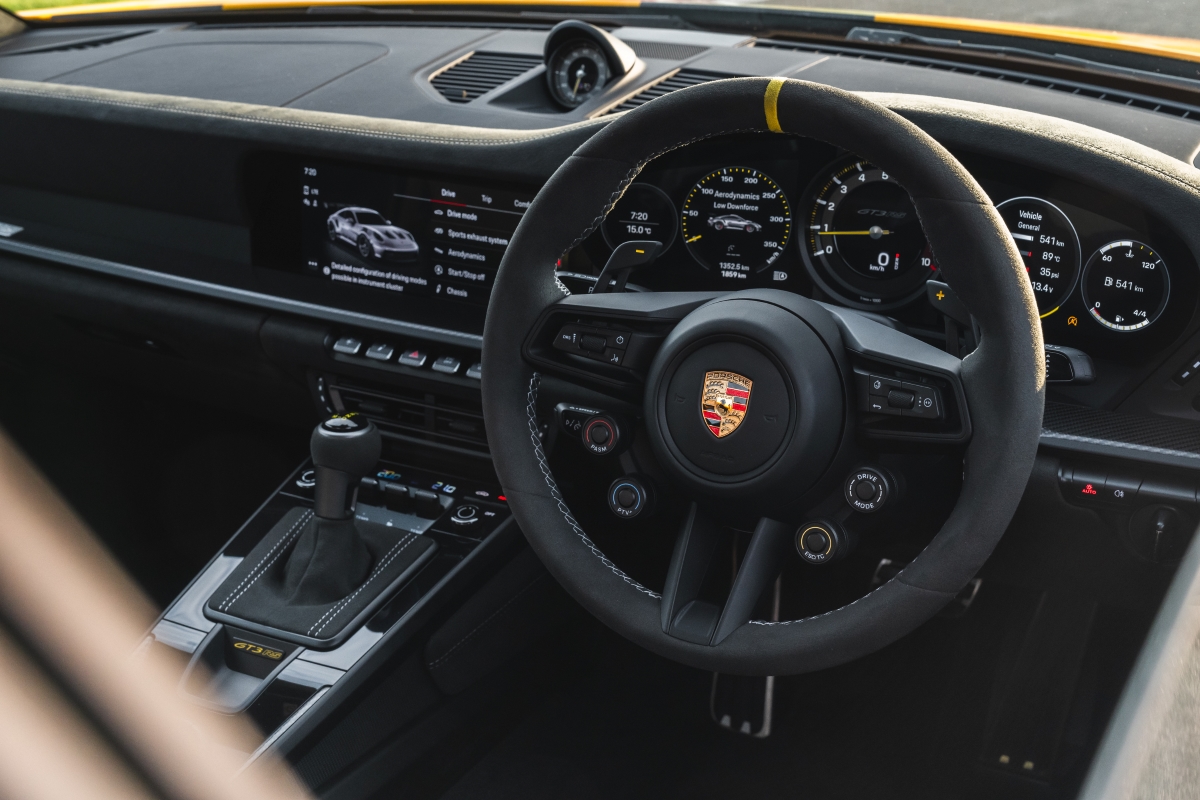
Functional and purposeful but not spartan or uncomfortable. The GT3 RS comes with the modern conveniences you’d expect, like air-conditioning and a nice sound system, but it’s clearly a car designed to go fast.
The examples we drove were fitted with the optional, track-friendly Weissach Package and came with carbon fibre racing-style seats and multi-point harnesses as well as a half-rollcage where the back seats should be.
If being strapped into a harness isn’t a clear sign of the intent of the GT3 RS a glance at the steering wheel underlines just what this car is all about. There are four new rotary dials/buttons (or “satellites” as Porsche calls them) that are mounted on the wheel. These allow you to adjust amazing technical details such as the suspension rebound and compression damping, Porsche Torque Vectoring and traction control; plus there’s a button to activate the DRS. It’s not quite F1-spec but it does speak to the clear motorsport connection for this car.
How’s it go down the straights?

Yet another noticeable element of the GT3 RS are the fins on the roof, which are another motorsport-inspired piece. But despite looking very aerodynamic they aren’t there to generate downforce. Instead, they are there to help separate the hot air being expelled through the various vents, and direct the cooler air into the engine.
It’s so effective that Porsche chief driving instructor Luke Youlden tells us that if we were to stick our hand out the window we’d feel a difference in air temperature above and below the roofline.
We didn’t get a chance to try that though, because the GT3 RS is so quick were were hitting more than 250km/h by the end of the straight, so we had both hands firmly on the steering wheel.
That’s thanks to the 4.0-litre flat-six engine, which is the same basic unit found in the GT3 but gets new camshafts and modified cam profiles to punch out 386kW of power (up 11kW from the GT3) and 465Nm of torque (which is actually 5Nm less than the GT3). The engine is paired exclusively to a seven-speed dual-clutch transmission, with no manual available.
While that fact may upset purists, the GT3 RS is all about maximising lap times and the paddle-shift gearbox makes that job easier. The engine pulls hard and spins up quickly to the red line so you need to be pulling gears quickly at times.
What’s it like in the bends?

This is where the GT3 RS was designed to thrive. The aerodynamic package was created because Porsche didn’t want to switch to a turbocharged engine or hybrid boost or anything that would take away from the driving purity, so finding more corner speed was a must.
The suspension also features changes to the geometry and spring rates to further improve handling, with the ability to adjust rebound and compression damping individually between front and rear, for those who want to get really serious about hunting lap times.
The new RS rolls on huge rubber too, with the front tyres measuring 275/35 and wrapping around 20-inch rims, while at the rear they are 335/30 profile on a 21-inch rim. Our test cars were fitted with Goodyear rubber but Porsche also offers Michelin and Pirelli tyre options. As with the GT3 the forged alloy wheels feature a racing-style centre-lock.
Braking is handled by 408mm front rotors clamped by six-piston calipers, while the rear features 380mm rotors and four-piston calipers. If that isn’t good enough the company does option its Porsche Ceramic Composite Brake (PCCB) package, which features 410mm and 390mm rotors front and rear, respectively. We sampled both braking packages on track and both slowed the car with impressive force. Given the braking power is ultimately controlled by the limits of the tyres, the only real difference between the steel and ceramic brakes is the pedal feel, with the latter feeling less progressive.
In order to fully experience the potential of the car that meant driver coaching and data analysis with Porsche Australia’s crack team of instructors, which includes Youlden, Steven Johnson, Chris Pither, Garnett Patterson and Dean Canto (amongst others).
These racing experts helped us to extract as much performance as we could during our track session by studying our in-car footage and data, which was incredibly useful as few road cars offer this level of aerodynamic downforce.
Even with the coaching and multiple on-track runs the limit of the GT3 RS was beyond our initial drive, which should make it an ideal challenge for buyers who dabble in racing (as is likely the case). You need to learn to trust the downforce will hold you on the track and take advantage of it under braking, especially at the end of the long front straight.
In Youlden’s hands the super-fast turn five sweeper at The Bend is flat-out in this car, at around 200km/h, which is a deeply impressive achievement for something with number plates. Especially when the track felt narrow at 180km/h with a slight lift on the throttle.
And yet, despite its enormous performance potential the 911 GT3 RS isn’t an intimidating car. No, it’s not for beginners and it demands respect, but driven well it behaves itself and never feels scary or intimidating.
Is it a front-runner or backmarker?

This is the new benchmark for not just Porsche but also the sports car market, at least when it comes to track-focused driver’s cars. It isn’t the fastest car on the planet, but in terms of bang-for-your-buck, at $537,600 (plus on-road costs), it gives you not just supercar levels of performance but almost race car ability.
It’s certainly not for everyone and will only appeal to those who can appreciate its extreme focus and master its unique character. But those who do will be rewarded with a car like no other… at least not one with number plates.








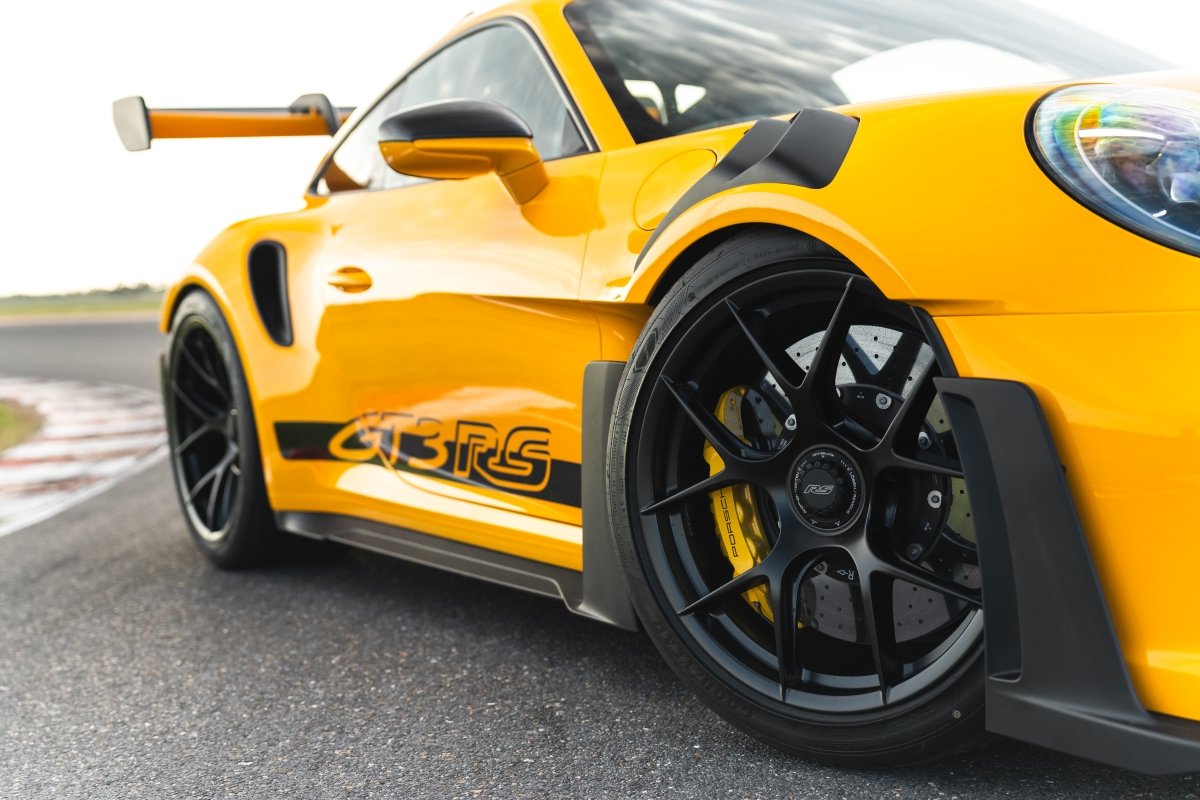









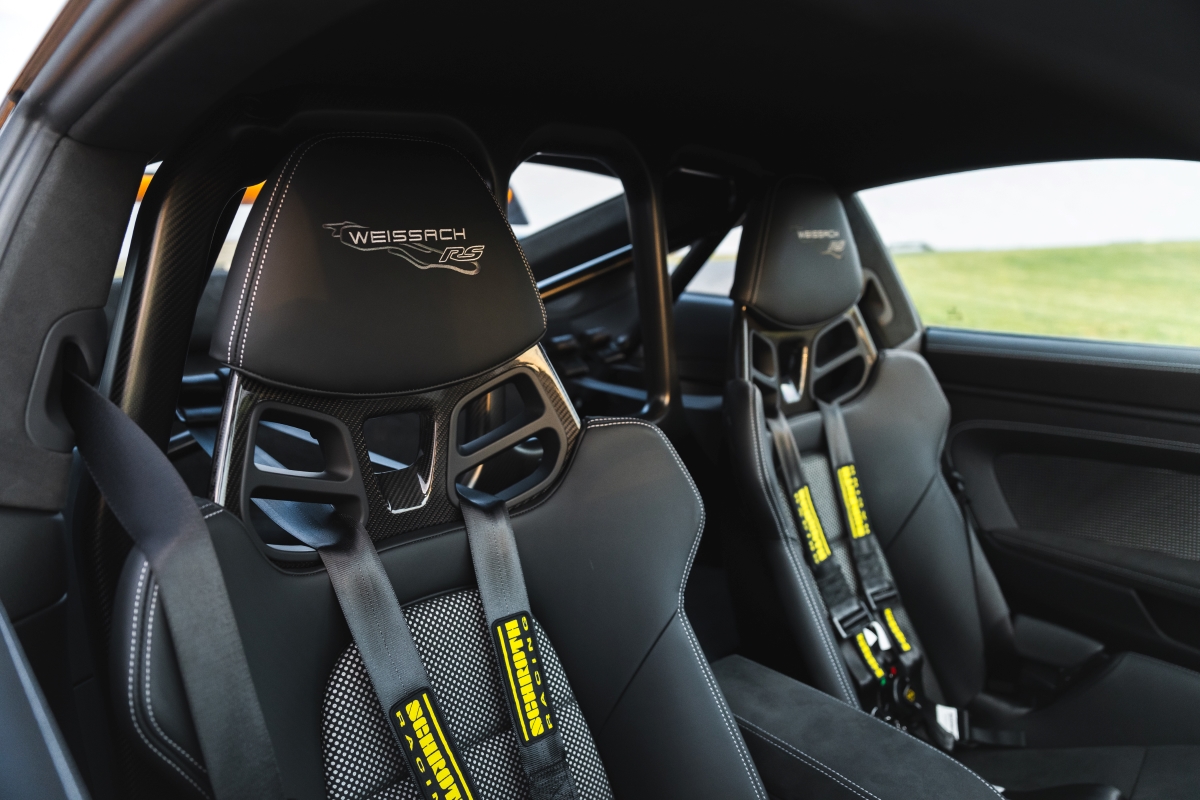



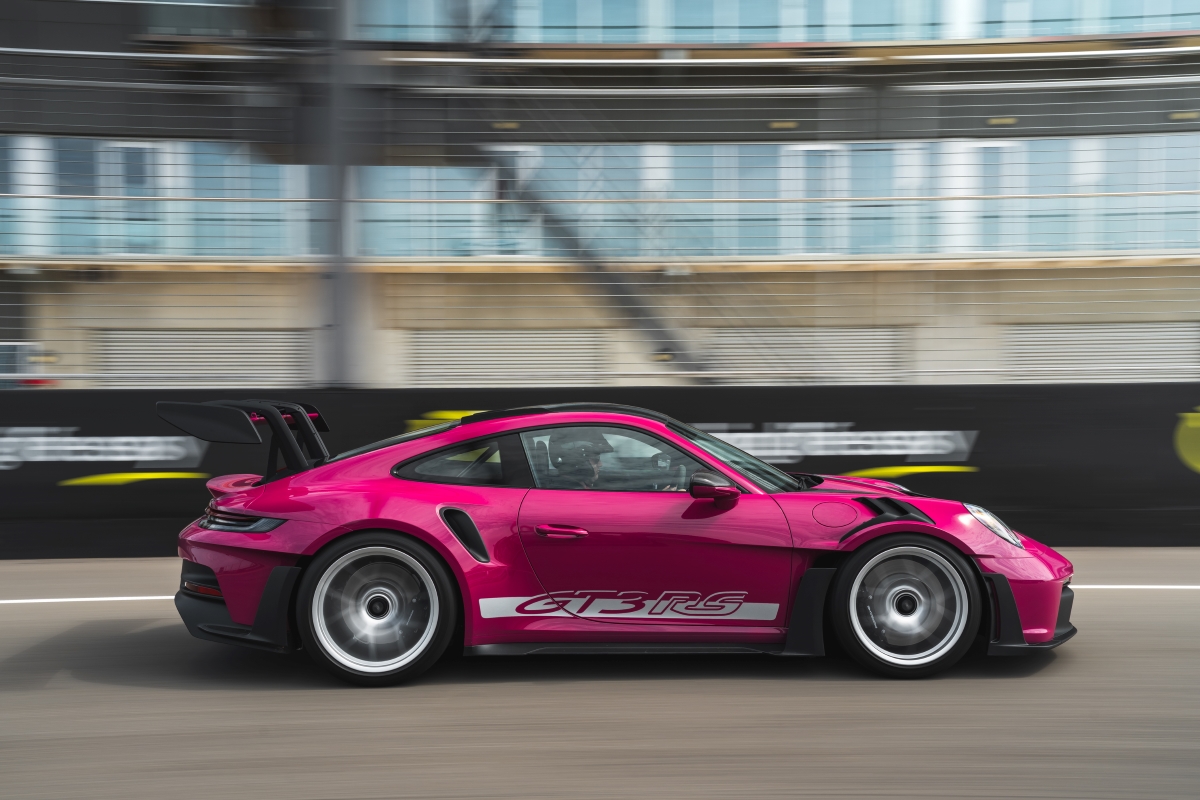
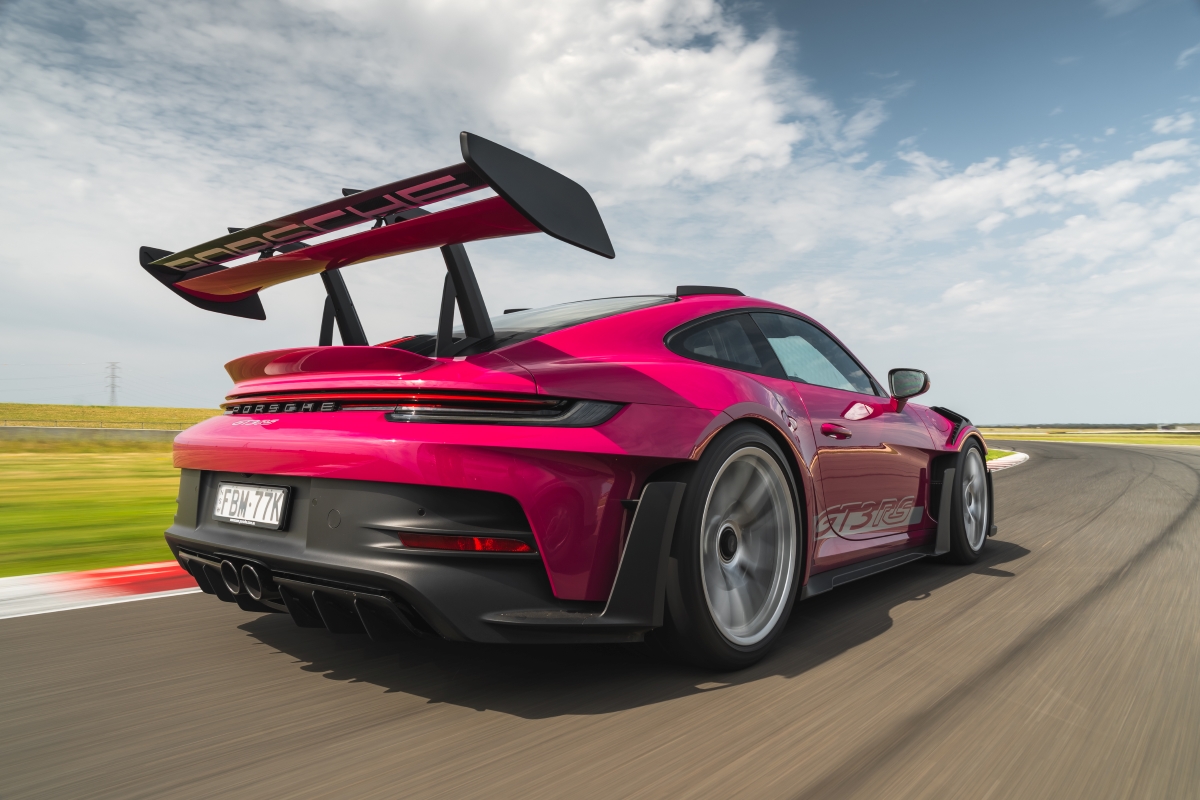
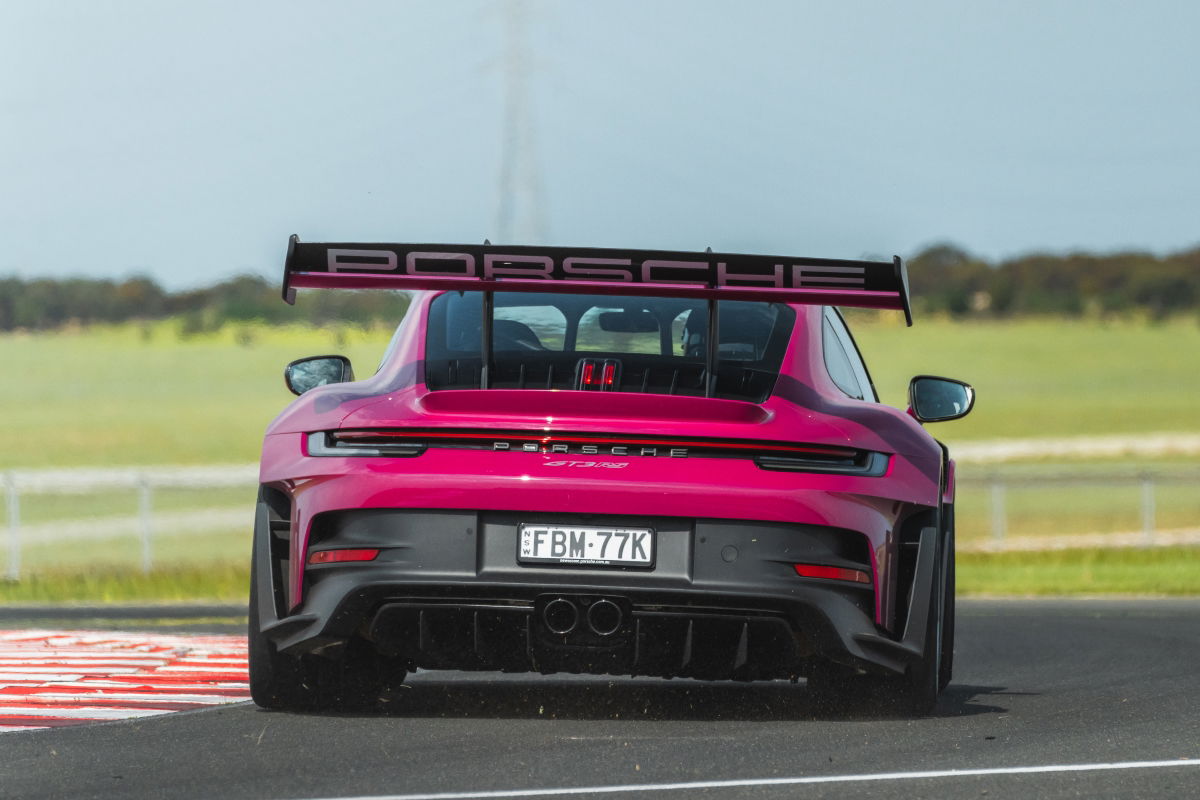














Discussion about this post